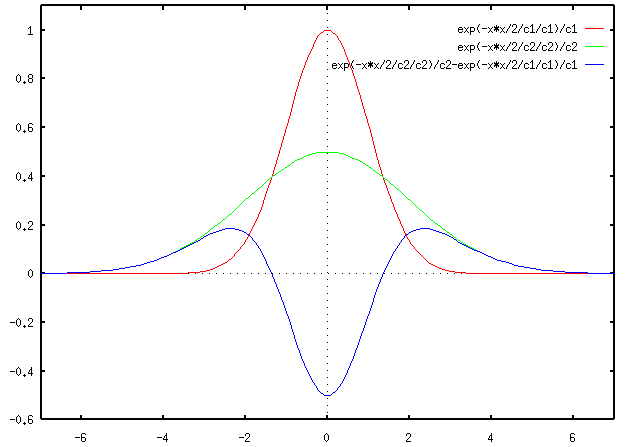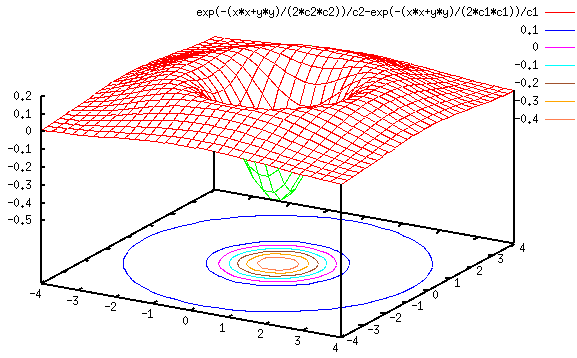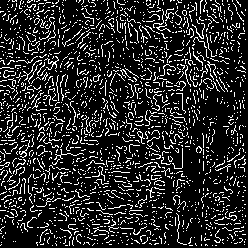Similar to Laplace of Gaussian, the image is first smoothed by convolution with
Gaussian kernel of certain width ![]()



As the difference between two differently low-pass filtered images, the DoG is actually a band-pass filter, which removes high frequency components representing noise, and also some low frequency components representing the homogeneous areas in the image. The frequency components in the passing band are assumed to be associated to the edges in the images.
The discrete convolution kernel for DoG can be obtained by approximating the continuous expression of DoG given above. Again, it is necessary for the sum or average of all elements of the kernel matrix to be zero.
Comparing this plot with the previous one, we see that the DoG curve is very similar to the LoG curve. Also, similar to the case of LoG, the edges in the image can be obtained by these steps:
Edge detection by DoG operator:
